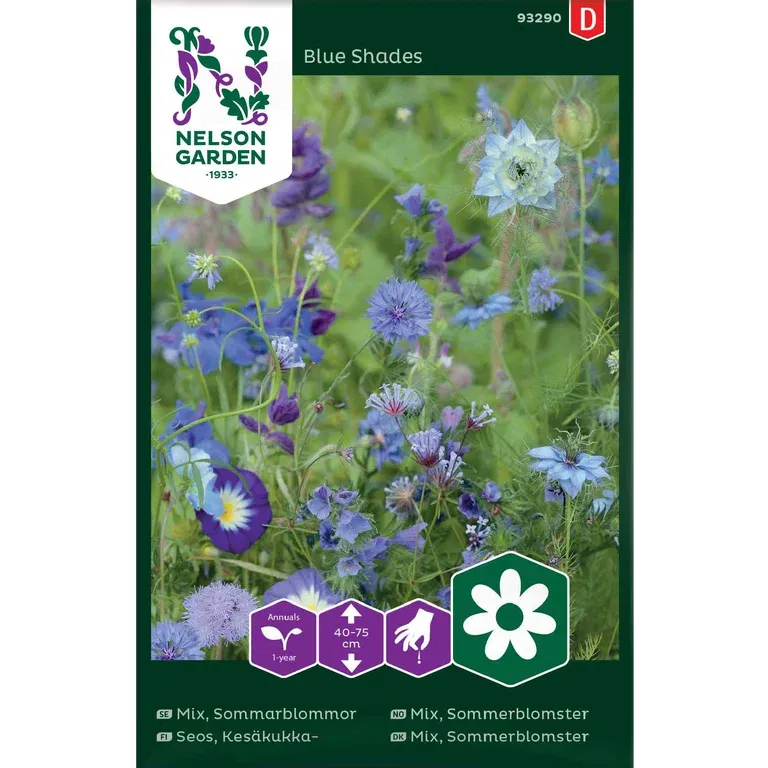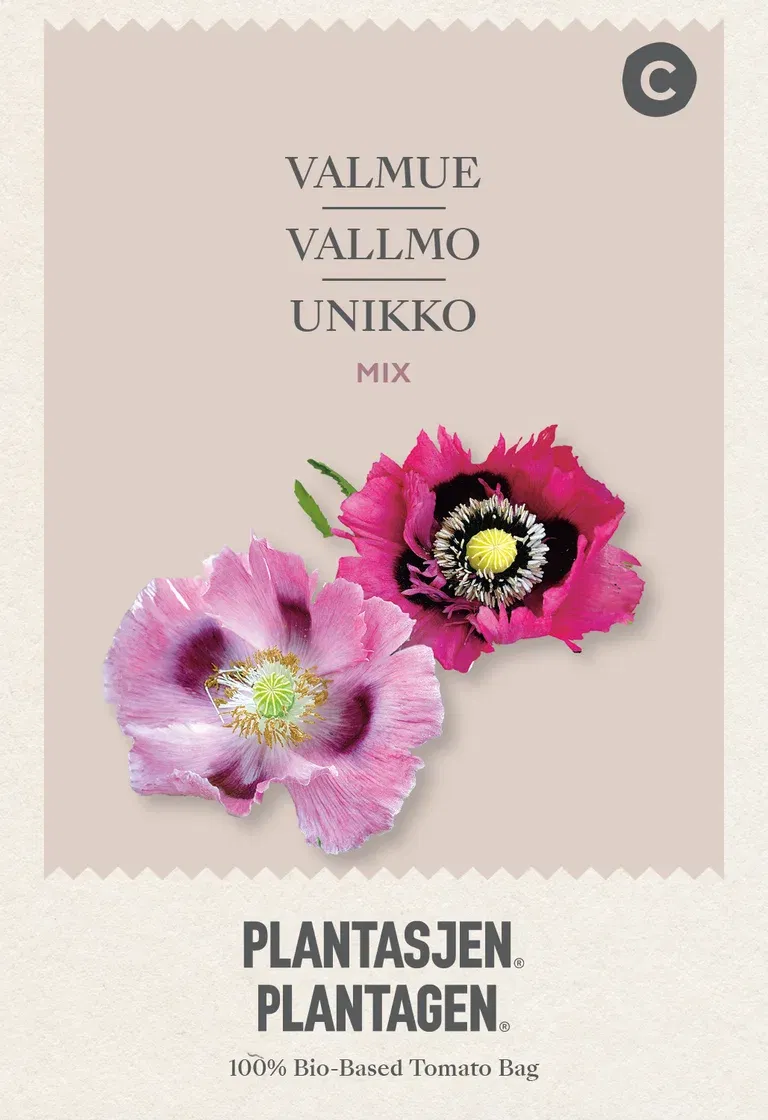Sow your summer flowers from seeds directly in the garden bed
Direct sowing means skipping the step of starting seeds indoors and sowing directly in the outdoor bed. You get a beautiful bed faster, save indoor growing space, and avoid some of the transplanting and acclimatization of young plants in the spring. You can also sow in the fall for an earlier bloom in the spring. The seeds remain dormant, waiting for the right temperature to begin growing.

What does direct sowing mean?
When you direct sow, rake the surface where the seeds will be sown and distribute the seeds according to the recommendations. Then, rake the soil back, water, and wait for the plants to start growing. The sown area should be kept moist until the plants begin to grow properly.
Preparations
Once the soil temperature reaches 5 degrees, you can start preparing it for direct sowing. Here’s what to consider when preparing the growing site:
- Remove weeds.
- Rake out uneven areas.
- Add some compost or fertilizer and mix it into the soil.
- If the soil has a coarse texture, you can amend it with some flower soil.
- You can warm the soil a couple of weeks before direct sowing by covering it with plastic.
- To protect the plants from strong sunlight, you can cover them with a thin garden fleece during the first few weeks.
Broadly sown or sown in rows
When you direct sow, you can choose to sow in rows or by broadcasting:
Sowing in rows – Dig a small trench with a small spade or by hand. Water the trench before placing the seeds in the soil and covering them.
Broadcast sowing – Broadcast sowing means scattering the seeds over a certain area, covering them with a thin layer of soil, and pressing them down with your hand. Broadcast sowing is generally better for small seeds and when you are growing plants in larger quantities.
Mark with labels
When the seeds are buried under the soil, you should label them with tags so you know what will emerge over time. This way, you avoid accidentally weeding out the sprouting seeds. Place the labels on small sticks and insert them into the soil.
Summer flowers to succeed with
Many summer flowers are suitable for direct sowing in the garden or bed in the spring and summer, typically between April and June. It’s lovely to have flowers and vegetables growing together in the kitchen garden. Here are some favorite flowers to sow directly—fast-growing flowers that create a wonderfully colorful bed.
Marigold
Marigolds come in many shades, so choose the one that looks best in your bed. Be sure to sow the seeds fairly close together and move the flowers as they grow to allow more space. Water the row before sowing the seeds.
Sunflower
Direct sow sunflowers in May or early June for a beautiful bed. Sunflowers grow quickly and come in various varieties and heights.
Cosmos
Cosmos is a flower that blooms well into the fall. When sowing, make sure to plant the seeds in a way that allows the flowers to receive some support, as they tend to grow tall. Avoid over-fertilizing, as they thrive in nutrient-poor soil.
Poppy
This beautiful red flower is a delight in any bed. It’s easy to grow and can be sown both in summer and fall. Poppy seed heads create beautiful capsules that can be dried and used for decoration.
Cornflower
Cornflower is a hardy and strong flower that enjoys the company of vegetables in the garden. It can be directly sown in April-May, but if you sow it in late summer, you’ll get an early bloom the following year.
Summer flowers to sow in the autumn
Some perennial summer flowers, or perennials as they are also called, can be advantageously sown in the fall. This applies to flowers like bluebell, marigold, daisy, and lavender. Lavender seeds require a cold period to grow better. The seeds remain in the soil, waiting for the light and warmth of spring to begin growing.
Read more:
You are here:










